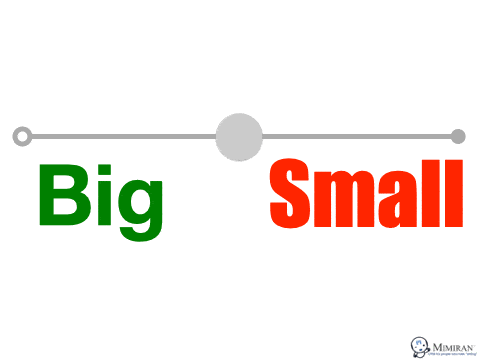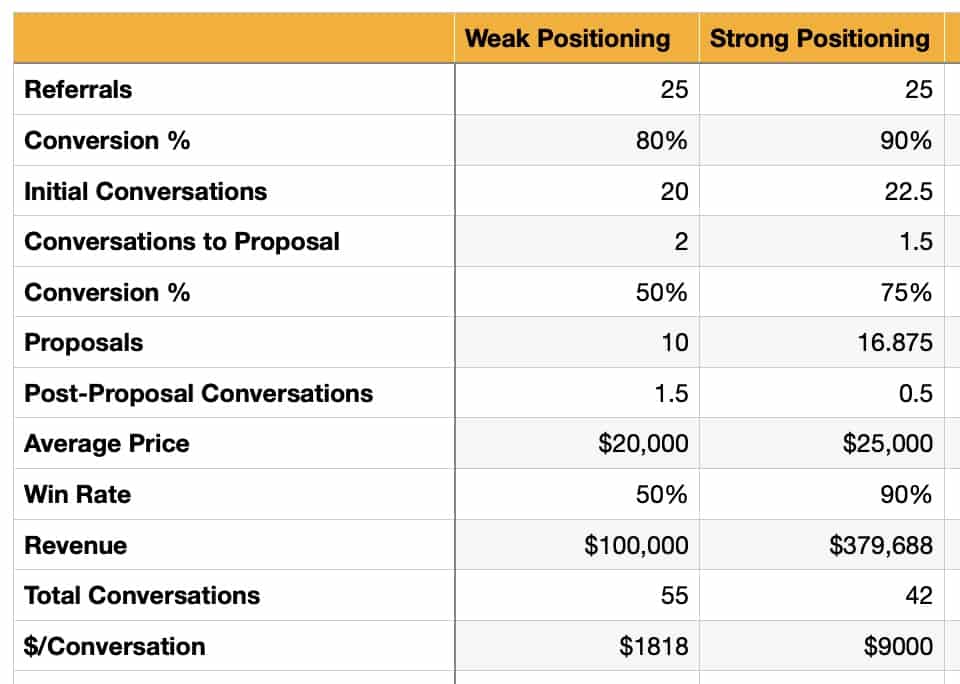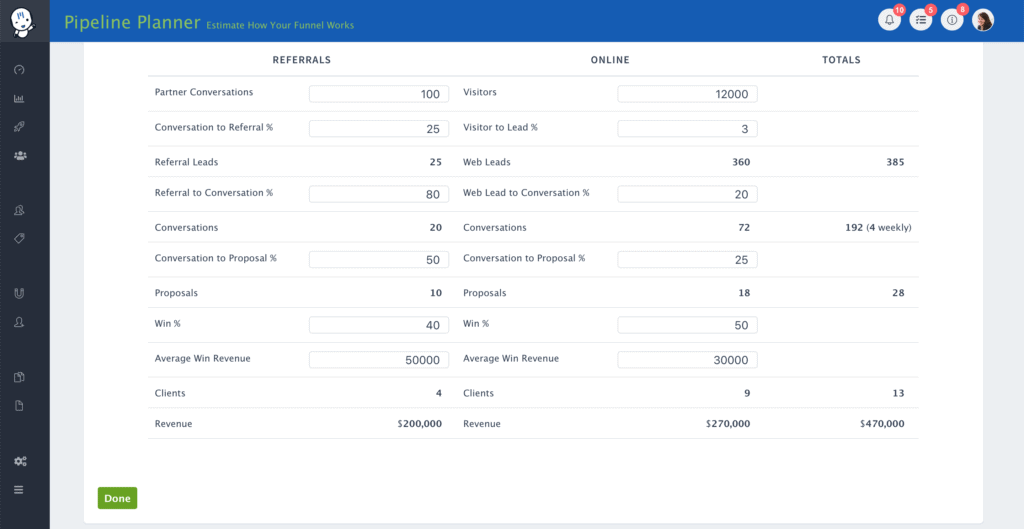If you’re worried about where and when you’ll find your next client, the natural reaction is to look in more places– to go broader, and create a wider sales and marketing funnel.
Unfortunately, this is like the snowboarder who starts to get nervous and instinctively leans back, putting weight on the back foot, which gravity turns into the front foot, followed very quickly by your face or your butt landing very hard in the snow.
Our instincts did not evolve for business development. Or snowboarding.
There are lots of good reasons to not only maintain tight positioning when you’re worried about business development, but even to tighten further. Namely, rather than worrying about quantity, we want to worry about the quality of leads in our pipeline.
When it comes to markets, you might think that bigger must be better, right? (After all, I’m from Texas.) If you’re Coca-Cola, this makes sense. But if you’re an independent consultant, how many clients can you serve at one time? 1? 3? 10? Maybe dozens, depending on how you structure your engagements?
(You can write a book, create online courses, etc, to reach more people at once, but these approaches come from narrow, focused work.)
So think “easy vs hard”, rather than “big vs small”.

As if making sales and marketing easier wasn’t reason enough, there’s another great reason to get focused:
You don’t have time for this $#%#!
Imagine a doctor, who in addition to performing shoulder surgeries, following-up with patients, prepping patients, etc, doing consults for shoulder issues, also did consults for hand injuries, knees, ankles, heart issues, gastrointestinal problems, runny noses, scratchy throats, etc. What would happen? The doc would spend all her time talking to people she’s not best able to help, instead of actually fixing peoples’ shoulders.
This is what happens to a lot of consultants. They’re surgeon specialists who act like general practitioners.
What does this mean for your time?
2 Sample Scenarios
Let’s take a look at 2 scenarios, one with weak, broad positioning, and one with strong, focused positioning.
Let’s also be generous to the “weak” scenario and assume it generates the same number of referrals as the stronger positioning, which is almost certainly not the case.
How many of those referrals lead to conversations? How many conversations does it take, on average, before going to a proposal (and what % of those even lead to proposals)? How many conversations do you need after the proposal?
How many of the proposals does the prospect accept? And what’s the average price?
What you see is that you have more conversations for less revenue with weaker positioning.

You can put together your own little spreadsheet and play with the numbers, add your own assumptions, etc. (If you’re using Mimiran, go to the Pipeline Planner screen to look at funnels for both referrals and online leads. And you’ll see how much revenue you’ll get and how many conversations you need.)

Whatever time you need to figure out your positioning and narrow your funnel, it pays off because you don’t end up wasting your time talking to people who have the wrong problem. That means you have more time (and energy) for your ideal clients, and for everything else that matters in life.
